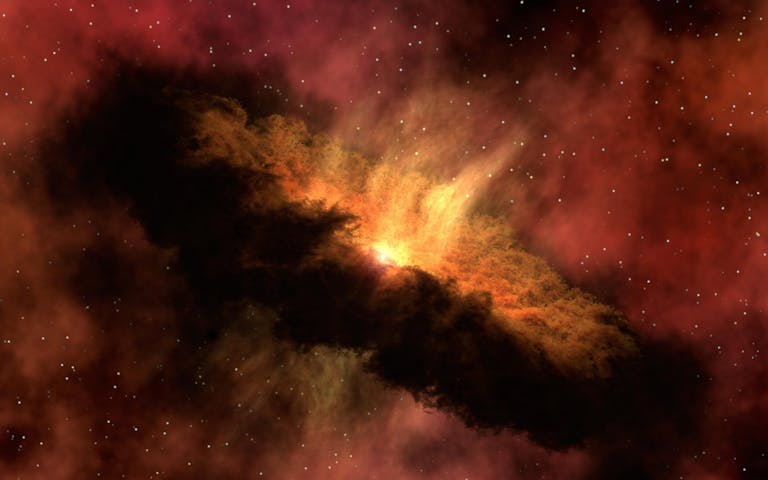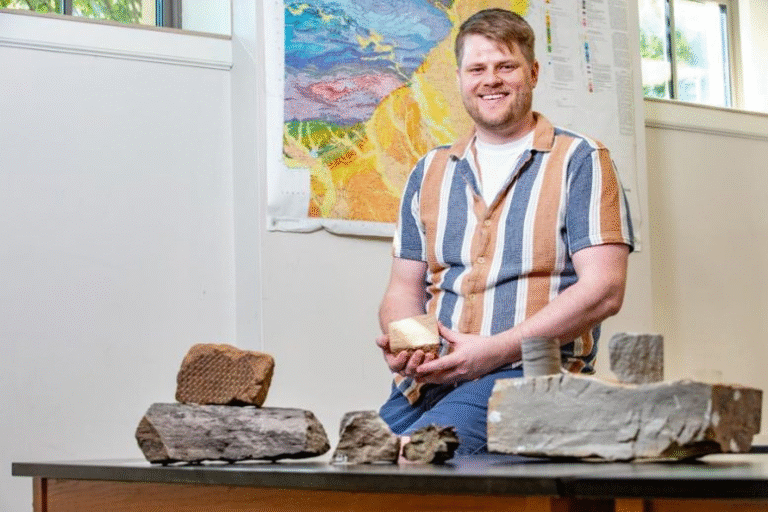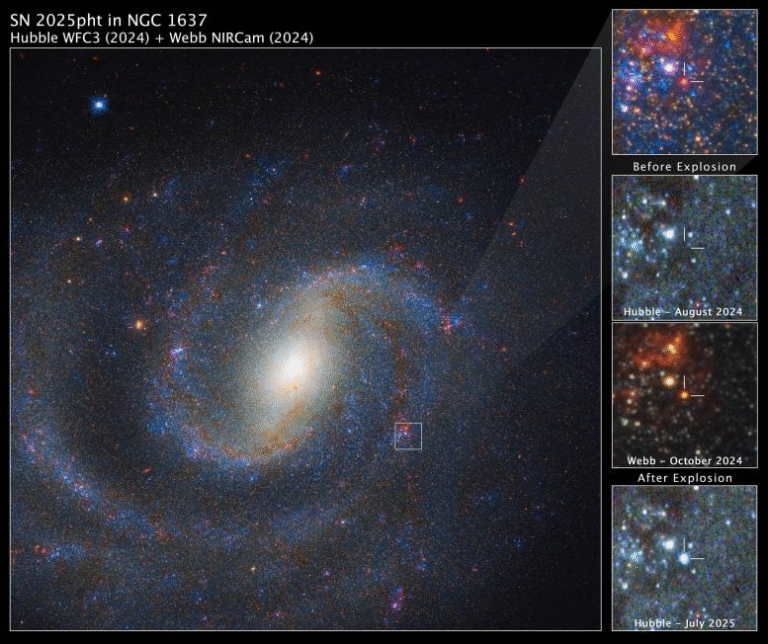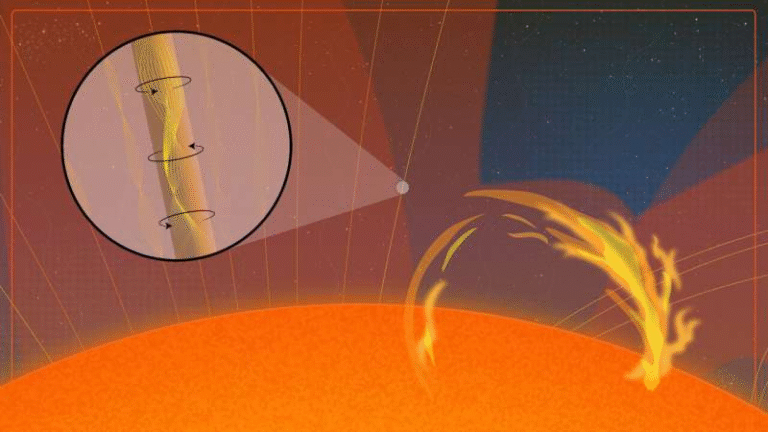The Sun’s Poles: Unlocking Solar Mysteries with the Solar Polar-Orbit Observatory

The poles of the Sun have long been a hidden frontier in solar science. While astronomers have studied sunspots, solar flares, and coronal mass ejections for decades, most of what we know comes from the ecliptic plane—the same narrow orbital zone where Earth and other planets reside. This restricted view has left one of the most important regions of the Sun—its polar areas—largely unobserved.
A new mission, the Solar Polar-Orbit Observatory (SPO), is scheduled for launch in January 2029, and it promises to revolutionize our understanding of the Sun. By finally capturing direct, high-latitude views of the poles, SPO could answer fundamental questions about the solar dynamo, the fast solar wind, and the way space weather events propagate across the solar system.
This article will give you a detailed, no-nonsense breakdown of the mission, why the poles matter, what instruments will be onboard, and how this ties into the broader picture of solar research.
Why the Sun’s Poles Matter
At first glance, the solar poles appear calm compared to the mid-latitudes, where intense activity like sunspots, solar flares, and coronal mass ejections (CMEs) dominate. But looks are deceiving. The magnetic fields at the poles play a central role in the solar dynamo—the process that generates the Sun’s global magnetic field and drives the 11-year solar cycle.
Every solar cycle, the Sun’s north and south poles switch polarity. This global reversal is fundamental to how solar activity builds and declines. Observations show that polar magnetic fields act as the foundation for the next solar cycle, making them crucial for understanding and predicting solar behavior.
Equally important is the fast solar wind, a stream of charged particles that originates in the polar coronal holes. This wind dominates the interplanetary medium, influencing everything from Earth’s magnetosphere to the environment spacecraft must operate in. Yet, how exactly this wind is accelerated—through wave processes, magnetic reconnection, or other plasma physics mechanisms—remains unsolved.
Finally, understanding the poles is key to improving space weather forecasting. Large eruptions like CMEs travel through the solar system, sometimes striking Earth and triggering geomagnetic storms that can disrupt satellites, communication systems, aviation, and even terrestrial power grids. From Earth’s orbital plane, our view of these events is limited. Observations from high-latitude angles will give scientists the global perspective needed to track these disturbances accurately.
The Three Big Questions SPO Will Address
The SPO mission is designed to tackle three long-standing mysteries in solar physics:
- How does the solar dynamo work?
- The Sun’s magnetic fields are generated by the interaction of plasma flows inside the convection zone.
- Helioseismic studies have produced conflicting results about whether plasma flows deep inside the Sun move poleward or equatorward.
- High-latitude magnetic and flow measurements are essential to refine or even rethink existing models.
- What drives the fast solar wind?
- Fast solar wind streams emerge from polar coronal holes, but scientists don’t know if they come from dense plumes or from less dense inter-plume regions.
- Competing models suggest wave acceleration, magnetic reconnection, or combinations of both.
- SPO will provide direct imaging and in-situ plasma measurements to resolve this debate.
- How do space weather events spread through the solar system?
- Current observations from near-Earth spacecraft offer only a narrow view.
- SPO’s out-of-ecliptic vantage will allow tracking of CMEs and solar flares in three dimensions, giving a clearer picture of their trajectories and evolution.
Past Efforts to Study the Solar Poles
The scientific community has long known that polar observations are vital. A few past missions made progress:
- Ulysses (1990): The first spacecraft to leave the ecliptic plane. It sampled the solar wind from high latitudes but lacked imaging instruments.
- Solar Orbiter (2020, ESA/NASA): Currently on its way to reaching up to 34° latitude. Recently, it provided the first-ever images of the Sun’s south pole in 2025, showing a chaotic patchwork of magnetic structures. Still, it will not achieve the high inclinations needed for a direct polar view.
- Proposed but unrealized missions:
- Solar Polar Imager (SPI)
- POLAR Investigation of the Sun (POLARIS)
- Solar Polar ORbit Telescope (SPORT)
- Solaris
- High Inclination Solar Mission (HISM)
These concepts aimed to achieve high-inclination orbits, often using solar sails or gravity assists, but none came to fruition.
The Solar Polar-Orbit Observatory (SPO)
The SPO mission is designed specifically to overcome these limitations.
- Launch Date: January 2029.
- Trajectory: Multiple Earth flybys and a Jupiter Gravity Assist (JGA) will tilt the orbit out of the ecliptic.
- Orbit:
- Inclination of up to 75° during the main mission.
- Possible extension to 80° in the extended phase.
- Orbit period: 1.5 years with a perihelion near 1 AU.
- Mission Lifetime:
- Nominal: 7 years.
- Extended: 8 additional years.
- Total: 15 years, covering both solar minimum and maximum phases, including the predicted maximum and polar field reversal around 2035.
- Polar Coverage: Over the mission, the spacecraft will spend more than 1,000 days in high-latitude observation windows.
Instruments Onboard SPO
SPO will carry a mix of remote-sensing and in-situ instruments, making it one of the most comprehensive solar observatories ever planned.
Remote-sensing payloads include:
- Magnetic and Helioseismic Imager (MHI) – measures surface magnetic fields and plasma flows.
- Extreme Ultraviolet Telescope (EUT) – captures activity in the upper solar atmosphere.
- X-ray Imaging Telescope (XIT) – monitors energetic events like flares.
- Visible-light Coronagraph (VISCOR) – tracks structures in the corona.
- Very Large Angle Coronagraph (VLACOR) – extends coverage of solar wind streams out to 45 solar radii at 1 AU.
In-situ payloads include:
- Magnetometer – samples interplanetary magnetic fields.
- Particle detectors – measure solar wind particles, energetic ions, and electrons.
By combining direct imaging with local plasma measurements, SPO will bridge the gap between polar dynamics and their heliospheric effects.
Working in Synergy with Other Missions
SPO will not be working alone. It is expected to operate alongside a fleet of missions, forming the first global solar observation network:
- STEREO
- Hinode
- Solar Dynamics Observatory (SDO)
- IRIS (Interface Region Imaging Spectrograph)
- ASO-S (Advanced Space-based Solar Observatory)
- Solar Orbiter
- Aditya-L1 (India)
- PUNCH (NASA)
- Future L5 missions, such as ESA’s Vigil and China’s LAVSO
Together, these missions will provide 4π coverage of the Sun—something humanity has never achieved before.
Broader Implications of SPO
The stakes are high, and the outcomes are potentially transformative:
- Understanding the solar dynamo: Better predictions of solar cycles could improve space weather forecasting years in advance.
- Modeling the heliosphere: Insights into solar wind physics will refine our understanding of interplanetary space conditions—vital for spacecraft engineering and astronaut safety.
- Protecting technology on Earth: Improved forecasting of solar storms can safeguard power grids, satellites, aviation, and communication systems.
A Few Extra Facts About the Sun’s Polar Mysteries
To enrich this picture, here are some additional facts worth knowing:
Polar Coronal Holes
- These are dark regions in ultraviolet and X-ray images of the Sun.
- They are sources of high-speed solar wind streams that can strike Earth.
- Their size and shape vary with the solar cycle, growing during solar minimum.
Magnetic Pole Reversal
- Occurs roughly every 11 years at solar maximum.
- The north and south poles swap polarity.
- This process is critical to the Sun’s magnetic cycle and helps regulate solar activity levels.
Why High Inclination Orbits Are Hard
- Moving out of the ecliptic requires large changes in velocity.
- This makes such missions extremely fuel-expensive unless gravity assists (especially from Jupiter) are used.
- SPO’s complex trajectory design reflects decades of mission-planning experience.
Looking Ahead
The Solar Polar-Orbit Observatory represents one of the most ambitious solar missions ever attempted. If successful, it will finally give scientists a direct view of the Sun’s poles, filling in the missing pieces of solar dynamo models, solving long-standing questions about the fast solar wind, and improving global space weather forecasting.
By 2035, when the Sun is expected to hit its next maximum and undergo a polar field reversal, SPO will be in an ideal position to capture these events in unprecedented detail.
For the first time in human history, we may achieve a nearly complete, 360-degree understanding of our star.
Reference: “Probing Solar Polar Regions” – Chinese Journal of Space Science, August 2025





